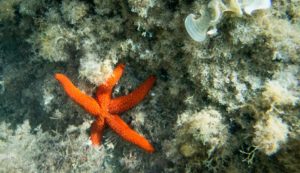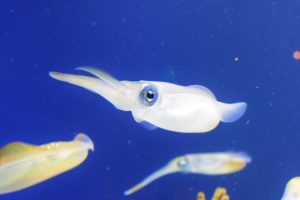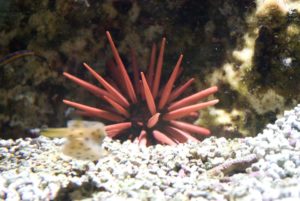Inspired by the Nature

In the sixteenth century, Leonardo da Vinci wrote:
« Take your lessons in nature, that’s where our future is ».
Let’s be inspired by nature and especially by the ocean – a vast reservoir of potential medical solutions.
Thirteen Nobel prizes in medicine have been attributed to scientists who have been inspired by the ocean and aquatic environments.
- In 1908, Elie Metchnikoff discovered phagocytosis (principle of immune defence against bacteria with white blood cells) thanks to a starfish and is considered the father of cellular immunity.
- In 1913 Charles Richet, thanks to jellyfish, discovered anaphylaxis, furthering our understanding of allergies
- In 1931 Otto von Warburg discovered how the human respiratory enzyme (hemoglobin) works by studying sea urchins. He also discovered, with sea urchins, that fertilization is carried out with only one sperm per ovocyte.
- In 1963, Andrew Huxley & Alan Hodgkin were able to show how nerve impulses are exchanged between cells by measuring changes in electrical charges in a very large nerve fiber from a species of octopus
- In 2000 Eric Kandel discovered the molecular basis of memory through the study of the sea slug’s nervous system. He has shown that interactions between nerve cells are essential for learning and memory.
- In 2001 Timothy Hunt identified the key molecules involved in cancer through his research on starfish.
- Finally, more recently, in 2009, Jack Szostak, Elizabeth Blackburn & Carol Gredier were awarded a Nobel Prize for their work on the functioning of telomerase enzymes. The “telomeres” at the end of chromosomes have long been known to protect chromosomes during cell division. The telomerase findings, which were made by studying a tiny organism living in ponds, could help to counteract cell aging
So many examples prooving that the ocean can provide many medical answers. 90% of marine species are still unknown. Let’s discover them, let’s get inspired by them and let’s protect these incredible treasures!





